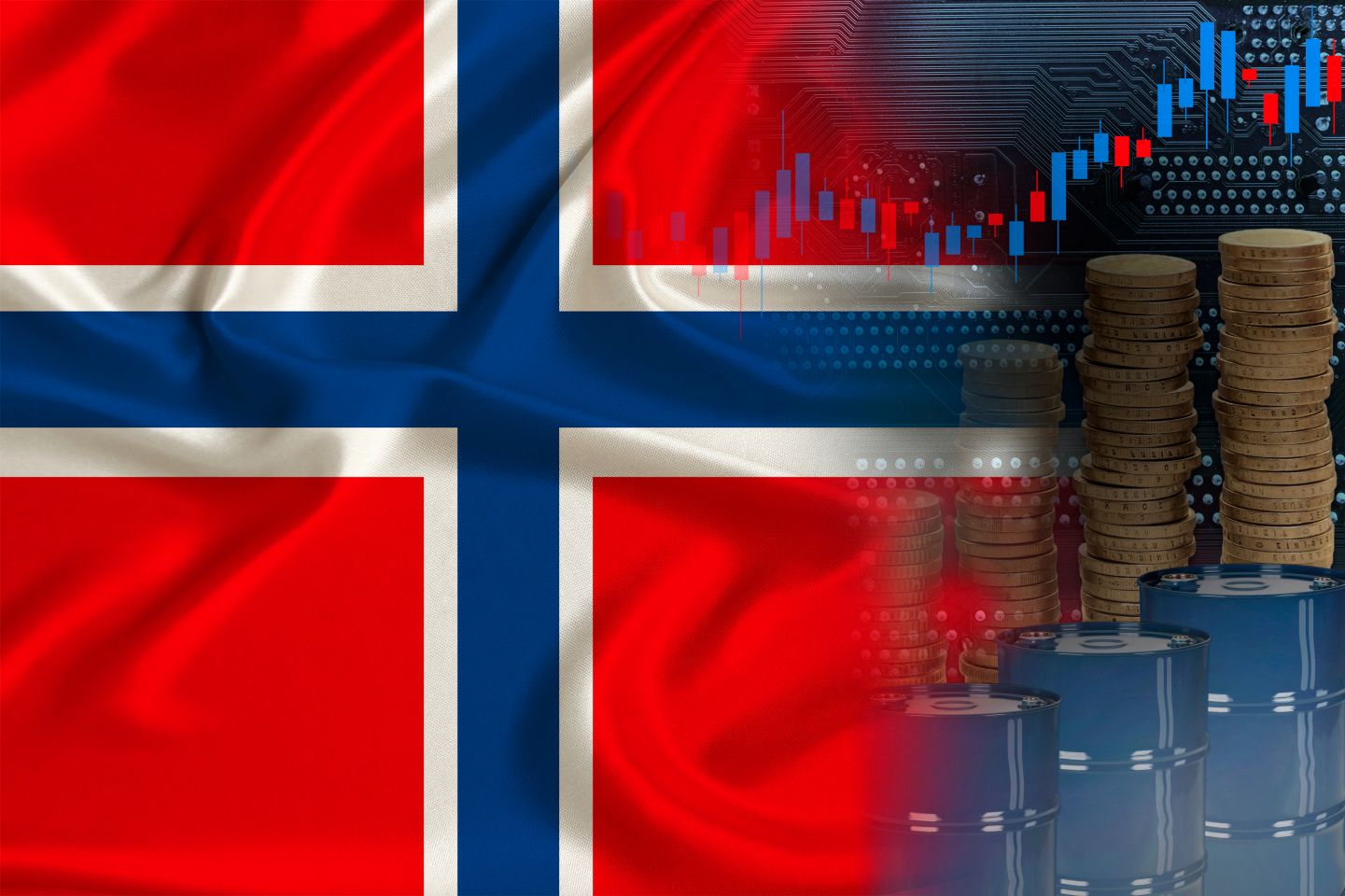How to invest in Norwegian stocks
The Oslo OBX and the broader Oslo Børs All-Share Index (OSEAX) remain relatively strong, though recent months have seen increased volatility. As of November 2025, the index sits at around 1,844, up roughly 14% year on year but down about 3–4% over the past month, following an all-time high near 1,929 in October. Past performance is not a reliable indicator of future results.
Norway offers investors access to some of Europe’s largest energy and industrial firms, including Equinor (EQNR), DNB, Norsk Hydro (NHY) and Yara International (YAR). The energy and shipping sectors have supported performance through 2025, while real estate, technology and consumer sectors have underperformed.
If you’re exploring ways to diversify your equity portfolio, here’s an overview of how to gain exposure to Norwegian stocks.
About the Norwegian economy
Norway remains one of the world’s wealthiest countries by GDP per capita. The economy is underpinned by low income inequality, strong governance and substantial natural resources, particularly oil and gas.
The Norwegian Government Pension Fund Global (the Oil Fund) manages the nation’s petroleum revenues and is among the world’s largest sovereign wealth funds. As of 2025, it continues to hold significant global equity exposure, though its allocation has shifted since 2022.
Norway is not a member of the European Union, and its central bank, Norges Bank, manages monetary policy and issues the Norwegian krone (NOK). The currency’s value often moves in line with global energy prices. In 2025, monetary policy remains restrictive, with higher rates contributing to tighter financial conditions and increased volatility.
Past performance is not a reliable indicator of future results.
Investing in Norway: Equity benchmark indices
The primary benchmark for Norwegian equities is the Oslo Børs Benchmark Index (OBX), which tracks the most traded and liquid shares on the exchange. As of 2025, its composition remains broadly stable, with Equinor, DNB, Norsk Hydro, Yara, Telenor and Mowi among the leading constituents.
Sector weights continue to favour energy, though performance divergence has widened as oil prices fluctuate and industrial output moderates.
Norway stock market performance
After strong gains through late 2023 and early 2024, the Norwegian market has seen higher short-term volatility in 2025. The OBX reached a record high near 1,929 in October 2025 before easing to around 1,844 in November.
Oil and gas prices remain the key market drivers, but performance varies significantly across sectors. Energy and shipping stocks have outperformed, while technology, real estate and consumer-focused shares have weakened.
Past performance is not a reliable indicator of future results.
How to invest in Norway stocks
There are several ways to gain exposure to Norwegian equities.
Stocks
Investors based in Europe can buy shares listed on the Oslo Børs directly via their brokerage accounts. Since joining Euronext in 2019, Norway-listed equities have become more widely accessible across platforms.
ETFs and mutual funds
Exchange-traded funds (ETFs) and mutual funds offer diversified access to Norwegian markets. Some track the OBX or OSEAX, while others are actively managed. Before investing, review fund details, fees and holdings carefully.
Key risks associated with Norway equities
When considering Norwegian equities, it’s important to recognise the main risks involved.
The economy is closely tied to energy prices, and fluctuations in global oil and gas demand, alongside monetary policy shifts and global growth trends, have been key drivers of volatility in 2025.
Other potential risks include:
- Global economic uncertainty, interest rates, and tighter financial conditions
- Uneven sector performance, particularly in real estate and consumer markets
- Exposure to changes in global energy demand and geopolitical events
How to get exposure to Norway stocks via CFDs
Contracts for difference (CFDs) enable traders to speculate on Norwegian equities or indices without owning the underlying assets.
CFDs are leveraged instruments, meaning potential gains and losses are magnified. Margin allows traders to open larger positions relative to their account balance. For instance, Capital.com offers flexible margin requirements on major Norwegian shares such as DNB Bank (DNBo), as well as forex pairs like USD/NOK.
CFD traders should be aware of associated risks, including margin calls, overnight fees and slippage. Guaranteed stop-losses can help limit downside risk by closing positions at a specified price, though an additional cost applies.
Final thoughts
It is important to highlight the value of your own research before trading or investing. Reading about how to invest in Norway is a good place to start. You should always conduct your own thorough due diligence before making any financial decision, looking at the latest news, a wide range of analyst commentary, technical and fundamental analysis.
Traders should understand the risks related to equity markets and to using leveraged instruments such as CFDs. It is also critical to acknowledge the volatility of financial markets.
Remember, past performance does not guarantee future returns, and you should never trade money you cannot afford to lose.
Create an account Open a demo account
FAQ
How can I invest in Norwegian stocks?
Retail investors can gain exposure to Norway’s equity market through individual shares, exchange-traded funds (ETFs) or mutual funds. It’s important to understand the associated risks and carry out thorough research before investing.
Is investing in Norway a good idea?
Whether Norwegian stocks fit within your portfolio depends on your risk tolerance, diversification goals and overall strategy. Always review the latest market data, analyst commentary, and both technical and fundamental insights before making any financial decisions.
Should I invest in the Norwegian stock market?
Equity investing carries risk, and the value of shares can rise as well as fall. Market participants should perform their own due diligence and determine independently whether exposure to the Norwegian market aligns with their objectives. Past performance is not a reliable indicator of future results. Never trade with money you cannot afford to lose.